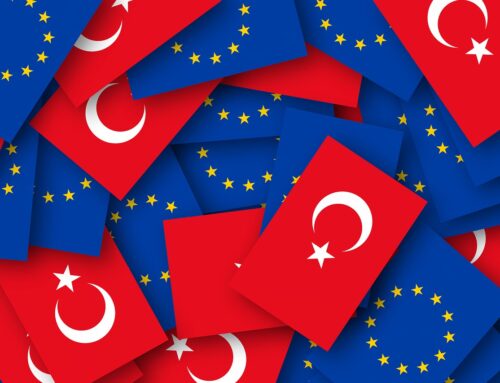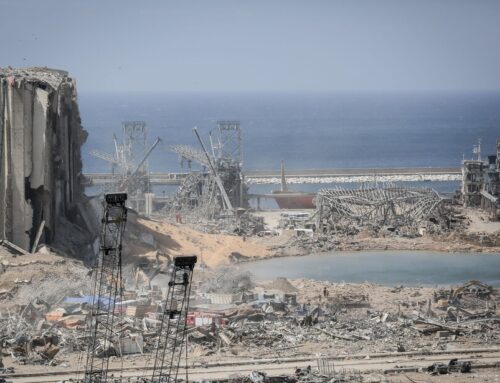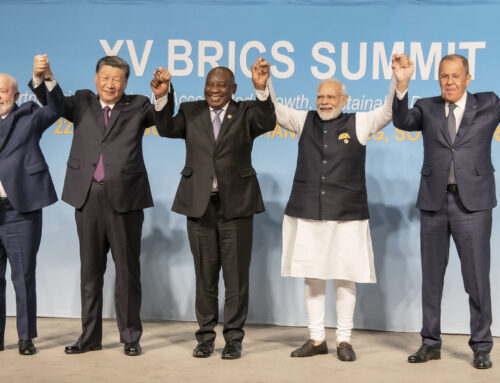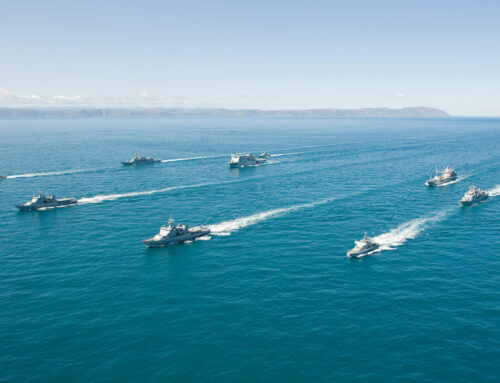PULASKI POLICY PAPER: Deliveries of Western aircraft for Ukraine – potential challenges and options (Robert Czulda)
Autor foto: Domena publiczna

Deliveries of Western aircraft for Ukraine – potential challenges and options
March 10, 2023
Author: Robert Czulda




PULASKI POLICY PAPER: Deliveries of Western aircraft for Ukraine – potential challenges and options (Robert Czulda)
Autor foto: Domena publiczna
Deliveries of Western aircraft for Ukraine – potential challenges and options
Author: Robert Czulda
Published: March 10, 2023
Pulaski Policy Paper no 13, March 10, 2023
Ukraine is pressing its international partners to begin delivering multirole aircraft. Although such discussions have been ongoing for some time and some MiG-29s were reportedly handed over by Poland, this plan – at least when it comes to Western aircraft – remains unlikely. There is a lack of political will, and concerns related to such move cannot be ignored. Nonetheless, NATO and EU member states still have several options to support Ukraine’s aviation.
According to Kyiv, there is a need for at least 200 multirole aircraft. [1] It is an undeniable fact that new aircraft would support Ukraine’s aerial capabilities, which are outdated and worn out by war. Ukrainian weak air force is currently based mainly on Soviet-era MiG-29s, Su-24s, Su-25s, and Su-27s, and in its current state, it is unable to achieve air superiority, including a tactical advantage.
However, it is difficult to determine to what extent new aircraft would truly enhance Ukraine’s warfighting capabilities. This would depend on various factors, such as a number and type of jets, proficiency of Ukrainian pilots and ground personnel, technical condition of those aircraft, access to weapons (such as guided and unguided bombs, air-to-air and air-to-ground missiles), and interoperability between aircraft and other sensors (surveillance, reconnaissance, or target designators). Both a quality and quantity of ground facilities would also play a crucial role.
Moreover, Russia has improved a quality of its air defence in the region, and it would maintain its numerical advantage anyway. As noted by Justin Bronk, a senior airpower researcher at the Royal United Services Institute, “most Western air-to-ground munitions for close air support are optimized for being delivered from medium altitude, with a targeting pod, and that’s not really viable near the frontlines because of the Russian ground-based air-defence threat”.[2]
From Ukraine’s perspective – given its existing infrastructure and experience – the best option would be to acquire aircraft that it already knows, including, for example, the still-popular MiG-29 twin-engine fighter aircraft, which can conduct both air superiority and ground-attack duties. However, Western multirole aircraft, capable of engaging both aerial and ground targets, are also on Ukraine’s wish list. This desire was openly expressed by President Volodymyr Zelenskyy during his speech to both houses of the United Kingdom Parliament.[3]
There have been some developments in this regard, but they are very limited. For example, the British Prime Minister Rishi Sunak proposed including Ukrainian pilots in training provided by the United Kingdom.[4] After French President Emmanuel Macron hinted that „nothing is excluded,”[5] some speculated that Paris could send its Dassault MIRAGE 2000 single-engine, fourth-generation jet fighters,[6] while others mentioned the less capable Dassault/Dornier ALPHA JET light attack/advanced trainer jets.[7] Other sources mentioned the Czech Aero L-159 subsonic light combat aircraft and advanced trainers,[8] the Swedish JAS-39 GRIPEN light single-engine multirole fighter aircraft,[9] or the Eurofighter TYPHOON twin-engine multirole jets.[10] Other experts speculated about the SEPECAT JAGUAR attack aircraft.[11]
The most obvious candidate is the F-16 single-engine aircraft, which is a multirole jet capable of carrying a wide range of NATO-standard weapon systems. Its advantage for war-torn Ukraine is that the F-16 can land on highway strips – such tests have been successfully carried out by several states, including Singapore and Taiwan (however, many other types have this capacity as well).[12] Moreover, the F-16 is very popular among NATO countries and even worldwide (according to Lockheed-Matin, 4,588 F-16s have been produced and there are roughly 3,000 operational F-16s in service today in 25 countries[13]). Their popularity is a great advantage – numerous states, either directly or indirectly, could easily join „coalitions of the planes”. There is no shortage of spare parts, as well as facilities to maintain them.
From a perspective of a potential challenges and problems, it is important to note that in the case of older variants, there is little risk of critical technology falling into enemy hands (as it may have already been transferred by Venezuela, which procured A/B Block 15 variants in 1982, or stolen from states such as Iraq, which ordered 34 F-16IQ Block 52 fighters). Moreover, these aircraft are often being phased out (despite some setbacks, which were confirmed by the United States).[14] Some countries, such as the Netherlands, Denmark, Norway or Belgium, are replacing them with the F-35 single-seat, single-engine, all-weather stealth multirole combat aircraft.
Main obstacles
However, there are significant challenges, much more important than in the case of armoured vehicles, including tanks. Firstly, modern aircraft are very complex systems that are much more sophisticated and demanding than any armoured vehicle. Moreover, they do not forgive mistakes. Aircraft require specialised support, which Ukraine does not have (the one it has is suited for particular types of ex-Soviet aircraft only). Building the entire support system, even in peacetime, is difficult and time-consuming.
This problem includes, among other issues, training, which requires more time not only for pilots but also for ground personnel. Finland, which replaced its Saab 35 DRAKEN and MiG-21 jets with F/A-18C/D HORNETs in the 1990s, can serve as an example. A training „took a full year including English lessons, flight simulations, emergency procedures and learning to use the aircraft to fight”[15] The US basic course, which includes academics, simulation training, and flight sorties, takes nine months for students who have already completed six months of basic flight training.[16]
It is not without significance that Ukrainians have no experience with Western aircraft, which complicates both technical and logistical issues. During discussions about a possibility of a quick transfer of MiG-29s to Ukraine – aircraft that they are familiar with – it turned out that „at a level of purely operational use, the biggest problem is scaling all systems and indicators according to a standard used in NATO and civil aviation. This means that altitude is given in feet, distance in miles, and speed in knots. Russian standards, also used in Ukrainian aviation, are meters, kilometres, and kilometres per hour. These differences are significant.”[17]In order to solve this problems, either pilots would have to be learnt how to operate new systems or aircraft would need to be modified. In case of Western aircraft this problem would be more significant.
Political factor
There is also a political concern that cannot be ignored – although a boundary between offensive and defensive weapons is usually very unclear, in the case of combat aircraft, it practically does not exist – they can be used both to defend one’s territory and to attack enemy territory. NATO’s position, including that of the United States, is clear on this issue – escalation of tension should be avoided, and targets on Russian territory should not be attacked.
Moreover, it cannot be ignored that by providing Ukraine with aircraft, the West would deprive itself of already limited resources. Those jets were supposed to be fully withdrawn until recently, but now – in the face of deteriorating international situation and uncertainty about Russia’s future policy – may still be needed. After all, one cannot exclude a scenario in which some NATO member states –like Poland – would also require emergency deliveries of additional planes at some point. Rebuilding air inventories is much more difficult and time-consuming than producing new armoured vehicles, anti-tank missiles, or tanks.
Jarmo Lindberg – a retired Finnish general and a former Chief of Defence – was right when he recently said that providing aircraft to Ukraine and introducing them into active service would require time and would not „materialise in weeks.”[18] Although this is an obvious statement, it is also very important, because some commentators seem to forget how complex modern aircraft are and how much effort is required to keep them operational – especially in countries like Ukraine, which are poor, without prior experience with Western aircraft, and currently experiencing war.
However, these are all technical obstacles that can be overcome with good will and adequate financial resources. The main obstacle remains political concerns, especially regarding a risk of escalation. A position of NATO member states is clear and difficult to argue with – Ukraine should be supported, but a fundamental goal of all member states and NATO itself is to avoid dragging the Alliance into a war. An argument about depleting NATO’s modest stockpiles of aircraft, which may be crucial in the near future, is also difficult to ignore. A key issue in this regard is a clear position of the White House. In January 2023, President Joe Biden „ruled out sending fighter jets”. In this situation, it is difficult to be optimistic about France’s political declaration of readiness to send its aircraft to Ukraine – earlier Paris „has not ruled out”[19] sending its LECLERC tanks to Ukraine, but it did not happen in the end. It was just a hollow political gesture. This makes a scenario of transferring combat aircraft unlikely. Nevertheless, not long ago, a transfer of any tanks by the West seemed unthinkable too – yet it happened and, hopefully, will continue.
Conclusions
- Supporting Ukraine by transferring ex-Soviet aircraft (including spare parts), which Ukraine knows already. Such aircraft are still possessed by some NATO member states, but they can be also found worldwide. Both NATO and the European Union should actively work to acquire both aircraft and associated spare parts and then transfer them to Ukraine.
- Supporting Ukraine by delivering helicopters, which can provide valuable support to infantry. An initiative of Croatia, which reportedly is willing to donate 12 x Mi-8 MTVs and 2 x Mi-8Ts from its own stocks,[20] can serve as an example. As with combat aircraft, the European Union and NATO should play an active role in this case.
- In both cases (i.e. aircraft and helicopters), both organisations should actively assist particular partner countries in Central and Eastern Europe in modernising their repair and production capabilities.
- Regardless of a current situation and low likelihood of deliveries, training of Ukrainian pilots should begin so that they can become familiar with Western systems, standards, and doctrines. Ukraine is said to have at least 50 pilots who could start training immediately. The same applies to ground crew and support personnel – training should start as soon as possible.
Author: dr Robert Czulda, Resident Fellow, Casimir Pulaski Foundation
Supported by a grant from the Open Society Initiative for Europe within the Open Society Foundations

[1] „Ukraine ‘needs up to 200 multipurpose aircraft, F-16 most likely candidate to replace Soviet-era jets’”, Yahoo! News, January 31, 2023, https://news.yahoo.com/ukraine-needs-200-multipurpose-aircraft-121300234.html.
[2] Mick Krever, „Tanks for Ukraine once seemed unthinkable. Could fighter jets be next?”, CNN, January 26, 2023, https://edition.cnn.com/2023/01/26/europe/ukraine-tanks-fighter-jets-intl/index.html.
[3] „Combat aircrafts – for Ukraine, wings – for freedom – address by President Volodymyr Zelenskyy to both Houses of Parliament of the United Kingdom”, President of Ukraine, February 8, 2023, https://www.president.gov.ua/en/news/bojovi-litaki-dlya-ukrayini-krila-dlya-svobodi-vistup-prezid-80857.
[4] Andrew Salerno-Garthwaite, „Combat aircraft for Ukraine. Wings for Freedom; Zelensky addresses UK Parliament”, Airforce Technology, February 8, 2023, https://www.airforce-technology.com/analysis/combat-aircrafts-for-ukraine-wings-for-freedom-zelensky-addresses-uk-parliament.
[5] Clea Caulcutt and Nicolas Camut, “Fighter jets for Ukraine are not ‘taboo,’ says France”, Politico, February 1, 2023, https://www.politico.eu/article/france-fighter-jet-delivery-ukraine-war-sebastien-lecornu-oleksii-reznikov.
[6] Ashish Dangwal, „Mirage 2000 For Ukraine? As US Rejects Sending F-16s To Kyiv, France Says Open To Sending Fighter Jets To Ukraine”, The EurAsian Times, February 1, 2023, https://eurasiantimes.com/mirage-2000-for-ukraine-as-us-rejects-sending-f-16s-to-kyiv.
[7] Maciej Szopa, “Ostatni myśliwiec delta pójdzie na wojnę? Mirage 2000 a Ukraina”, Defence24, February 5, 2023, https://defence24.pl/technologie/ostatni-mysliwiec-delta-pojdzie-na-wojne-mirage-2000-a-ukraina-komentarz.
[8] Armáda ČR, Twitter, February 18, 2023, https://twitter.com/ArmadaCR/status/1627029433776320512.
[9] Loukas Christodoulou, „Could Sweden’s ‘unique’ Gripen fighters help Ukraine?”, The Local, February 21, 2023, https://www.thelocal.se/20230221/could-swedens-unique-gripen-fighters-help-ukraine.
[10] Sakshi Tiwari, „Kyiv Eyes Eurofighter Typhoons As UK Agrees To Train Its Fighter Pilots On RAF Jets”, The EurAasian News, February 9, 2023, https://eurasiantimes.com/eurofighter-typhoons-as-uk-agrees-to-train-its-fighter-pilots.
[11] Marcin Strembski, Twitter, February 18, 2023, https://twitter.com/MStrembski/status/1626959401155166209.
[12] Michael Peck, „Taiwan’s Air Force Can Land an F-16 on a Highway. Does It Matter?”, The National Interest, October 30, 2020, https://nationalinterest.org/blog/reboot/taiwans-air-force-can-land-f-16-highway-does-it-matter-171581.
[13] „Made in Greenville: Lockheed Martin Celebrates New F-16 Production Line in South Carolina”, Lockheed Martin, no date, https://www.lockheedmartin.com/en-us/products/f-16/lockheed-martin-celebrates-new-f-16-production-line-in-south-car.html.
[14] Mark Episkopos, „The F-35 Is Not Enough: Why the Air Force Wants an F-16 Replacement”, The National Interest, July 15, 2021, https://nationalinterest.org/blog/reboot/f-35-not-enough-why-air-force-wants-f-16-replacement-189787.
[15] Lauren Chadwick, „Ukraine fighter jets: What are the pros and cons of supplying military aircraft?”, Euro News, February 22, 2023, https://www.euronews.com/my-europe/2023/02/22/ukraine-fighter-jets-what-are-the-pros-and-cons-of-supplying-military-aircraft.
[16] Jasmine Reif, „Train F-16 pilots – Luke’s mission”, Luke Air Force Base, July 20, 2012, https://www.luke.af.mil/News/Article-Display/Article/358711/train-f-16-pilots-lukes-mission.
[17] Juliusz Sabak, “Dlaczego MiGi-29 nie mogą być szybko przekazane Ukrainie”, Defence24, March 12, 2022, https://defence24.pl/technologie/dlaczego-migi-29-nie-moga-byc-szybko-przekazane-ukrainie-analiza.
[18] Lauren Chadwick, „Ukraine fighter jets: What are the pros and cons of supplying military aircraft?”, Euro News, February 22, 2023, https://www.euronews.com/my-europe/2023/02/22/ukraine-fighter-jets-what-are-the-pros-and-cons-of-supplying-military-aircraft.
[19] Lauren Chadwick, „Ukraine fighter jets: What are the pros and cons of supplying military aircraft?”, Euro News, February 22, 2023, https://www.euronews.com/my-europe/2023/02/22/ukraine-fighter-jets-what-are-the-pros-and-cons-of-supplying-military-aircraft.
[20] Adam Świerkowski, “Chorwacja wkrótce przekaże śmigłowce Ukrainie?”, Defence24, February 27, 2023, https://defence24.pl/wojna-na-ukrainie-raport-specjalny-defence24/chorwacja-wkrotce-przekaze-smiglowce-ukrainie.





